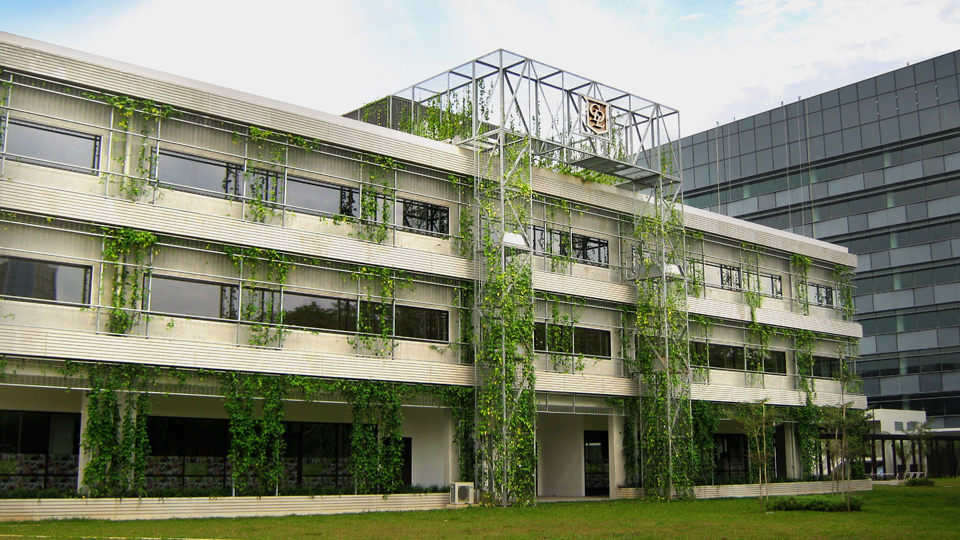Singapore, 15 May 2017 – Ahead of Singapore’s impending carbon tax and in line with the nation’s commitment to the Paris Agreement, Climate Action Plan and the Sustainable Singapore Blueprint, City Developments Limited (CDL) has enhanced its sustainability strategy by introducing a new sustainability blueprint CDL Future Value 2030 to complement its growth strategy and futureproof its business.
Outlined in CDL’s latest Integrated Sustainability Report 2017, the blueprint encapsulates the company’s long-standing sustainability commitment, over 20 years of best practices, and a set of tangible environmental, social and governance (ESG) goals and targets, with 2030 in mind.
CDL has made a bold move to raise its carbon emissions reduction target from 25% to 38% from 2007 levels by 2030.
2030 will be a milestone year for the Paris Agreement and the United Nations Sustainable Development Goals (SDGs). Specifically for the built industry, 2030 is the target year for the Net Zero Agenda by the World Green Building Council and for Singapore to green 80% of its buildings based on the Building and Construction Authority (BCA)’s Green Building Masterplan.
In addition, in view of the move towards a circular economy, CDL has set new targets to reduce its total waste disposed by 50% from 2016 levels and to ensure that 50% of its construction materials are derived from recycled content, low-carbon sources or certified by recognised environmental organisations.
These long-term ESG goals and targets are aligned with nine relevant SDGs, and follows CDL’s initiative as one of the first companies in Singapore to align its material ESG issues with the SDGs in 2016. It was estimated that the SDGs will unlock up to US$12 trillion of market opportunities representing around 60% of the real economy2.
Mr Grant Kelley, CDL Chief Executive Officer said, “Governments and the international investment community are increasingly holding corporations accountable for their carbon emissions. 2016 saw the growth of carbon pricing, particularly in Asia. In Singapore, the government announced in its Budget 2017 that a carbon tax targeting large direct emitters of Greenhouse Gases will be implemented in 2019. Businesses can no longer ignore the impact of climate change risks on their bottom line.”
“As ESG integration becomes essential to a company’s long-term success and economic value, we have continued to enhance CDL’s sustainability strategy to future-proof our business. Under our new CDL Future Value 2030 blueprint, we will actively track and review our ESG performance against the goals and targets established to support CDL’s growth while building a sustainable future.”
Strong ESG Performance for 2016
As highlighted in its Integrated Sustainability Report 2017, CDL achieved the following in 2016:
- 16% reduction in carbon emissions intensity from 2007 levels, on track to meet its 38% target for 2030
- 25% reduction in energy use intensity from 2007 levels, achieving its 25% target for 2030 ahead of time
- 15% reduction in water use intensity from 2007 levels, on track to meet its 25% target for 2030
- 100% of office buildings owned and managed by CDL are rated BCA Green Mark GoldPLUS and Platinum – the highest tier certification
- More than S$16 million in savings as a result of energy-efficient retrofitting and initiatives implemented for eight office buildings from 2012 to 2016
- Zero fatality and occupational diseases across CDL’s operations and direct suppliers in Singapore
- Accident Frequency Rate (AFR) of 0.53 at construction sites (significantly lower than the 2016 industry average of 1.7) and Zero AFR at CDL-managed buildings
Further Raising the Bar for Sustainability Reporting and Disclosure
For its Integrated Sustainability Report 2017, CDL is the first private developer in Singapore to adopt the latest 2016 Global Reporting Initiative (GRI) Standards for sustainability reporting. The enhanced standards promote a higher level of disclosure and greater accountability along CDL’s supply chain to address stakeholders’ concerns.
Through new technology, big data has impacted how companies communicate with investors and stakeholders. To provide more timely communication and robust ESG disclosure to its shareholders, investors and partners, CDL has also developed a dynamic digital strategy by launching a dedicated sustainability microsite (www.cdlsustainability.com).
CDL has been a forerunner in sustainability reporting since 2004, before the Singapore Exchange’s rules for sustainability reporting on a ‘comply or explain’ basis were introduced in 2016. As early as 2008, CDL published Singapore’s first GRI Application Level checked report.
In 2015, CDL became the first property developer in Singapore to adopt the International Integrated Reporting Council’s Integrated Reporting framework for its Sustainability Report. The approach connects CDL’s ESG performance with economic impact and highlights its value-creation through six capitals – Financial, Organisational, Natural, Manufactured, Social and Relationship, and Human – making stronger business sense of its ESG integration.
¹ Carbon emissions intensity refers to the amount of carbon emissions per square metre of floor area.
² Better Business, Better World’ report by the Business and Sustainable Development Commission, January 2017
